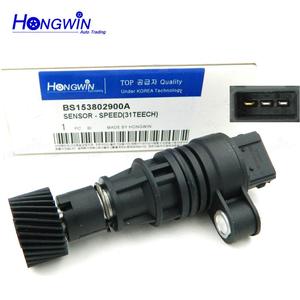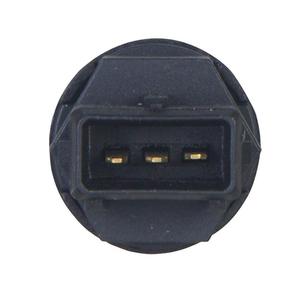(40 products available)



























































 Ready to Ship
Ready to Ship




















































































A speed sensor for Hafei detects the rotational speed of a spinning component in a vehicle. There are several types of speed sensors available for use in different vehicles. They include:
ABS Wheel Speed Sensor
The ABS wheel speed sensor monitors each wheel's rotational speed. It uses a magnetic or Hall effect design to generate an electrical signal based on the wheel's movement. The ABS module receives this signal and compares the speeds of all wheels. If it detects a speed difference indicating wheel slip or lockup, it activates the ABS actuators to prevent braking failure.
Transmission Output Speed Sensor (TOSS)
The TOSS sensor measures the speed of the transmission output shaft, which drives the wheels. It uses a magnetic coil or Hall effect sensor to detect the shaft's rotation. The TOSS sensor sends its speed signal to the engine control unit (ECU) and the transmission control unit (TCU). The ABS sensor data helps the ECU optimize engine performance and the TOSS sensor helps the TCU manage gear shifting based on vehicle speed.
Engine Speed Sensor
The engine speed sensor measures the crankshaft's rotational speed. It usually consists of a magnetic or inductive pickup that generates a voltage signal proportional to crankshaft speed. This signal goes to the engine control unit (ECU). The ECU uses the engine speed data for fuel injection, ignition timing, and other parameters that affect engine performance.
GPS-based Speed Sensors
Some modern vehicles use GPS sensors integrated into the vehicle's navigation system to calculate speed. The GPS sensor receives signals from satellites to determine the vehicle's position and speed. GPS speed data can augment traditional speed sensors and improve accuracy, especially in areas with poor wheel speed signal reception.
Tire Pressure Monitoring System (TPMS) Wheel Speed Sensors
Some vehicles use TPMS sensors to monitor wheel speed for tire pressure detection. These sensors, usually located in the wheel assembly, measure wheel speed based on changes in rotational frequency. The TPMS module uses the wheel speed data to calculate tire pressure differences among the wheels and alerts the driver of low tire pressure in real time.
Inductive Speed Sensors
Inductive speed sensors are traditional sensors that detect the speed of a rotating metal part with a changing magnetic field. They generate a voltage signal proportional to the speed change. Inductive sensors are durable and inexpensive but require close spacing to the rotating component.
Capacitive Speed Sensors
Capacitive speed sensors measure the distance to a rotating component based on the change in capacitance. The sensor's electrodes and the rotating part act like a capacitor. As the component moves closer or farther, the capacitance changes. This variation in capacitance signals the sensor's speed change. Capacitive sensors are useful for contactless speed measurement in applications requiring non-intrusive sensing.
Below are the specifications and maintenance of the speed sensor for Hafei.
Choosing the right speed sensor for Hafei requires careful consideration of several factors to ensure compatibility, reliability, and optimal performance. Here are some key factors to consider:
By considering these factors, one can choose the right speed sensor for Hafei, ensuring accurate speed measurement, optimal vehicle performance, and safety.
Most vehicle speed sensors are easy to replace with the right tools and mechanical experience. Here is a DIY guide on how to replace the speed sensor in a Hafei vehicle.
Before the process, ensure that the right VSS is available. Get a VSS that is compatible with the Hafei vehicle's make and model. The replacement process requires basic mechanical knowledge and skills.
Q1: Where is the speed sensor located on Hafei?
A1: The speed sensor is located on the transmission or the wheel hub assembly. It is connected to the vehicle's ECU.
Q2: Can I drive with a faulty speed sensor?
A2: It is not advisable to drive with a faulty speed sensor. It can affect the transmission performance, fuel efficiency, and overall drivability of the vehicle.
Q3: How long does it take to replace a speed sensor?
A3: The speed sensor replacement time can vary depending on the Hafei model and the sensor's location. It can take from 30 minutes to a few hours.
Q4: Does the speed sensor require maintenance?
A4: The speed sensor generally does not require maintenance. However, keeping it clean and checking its connection periodically is good.